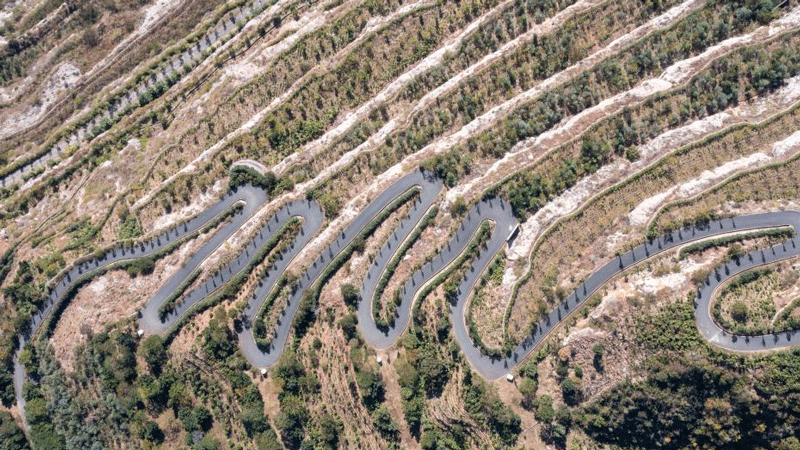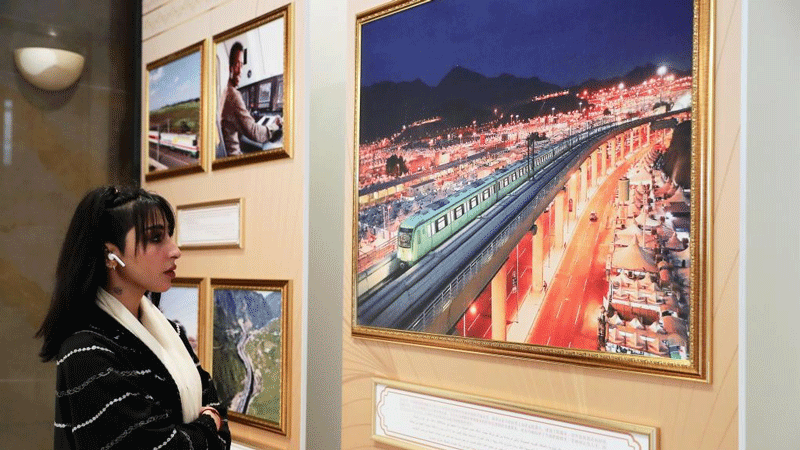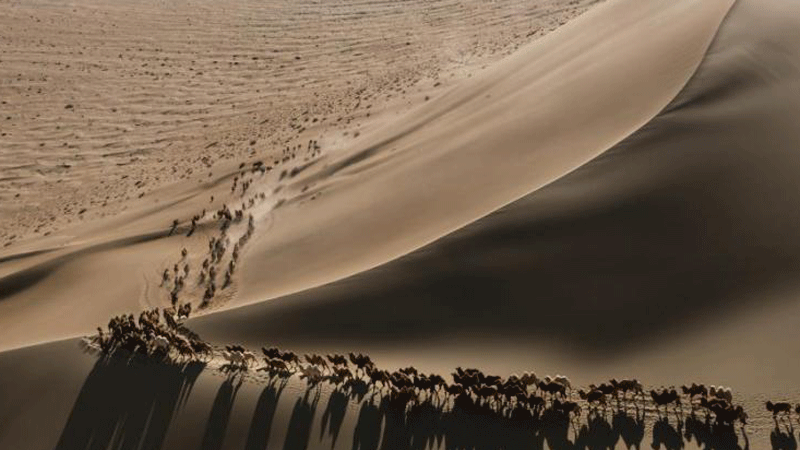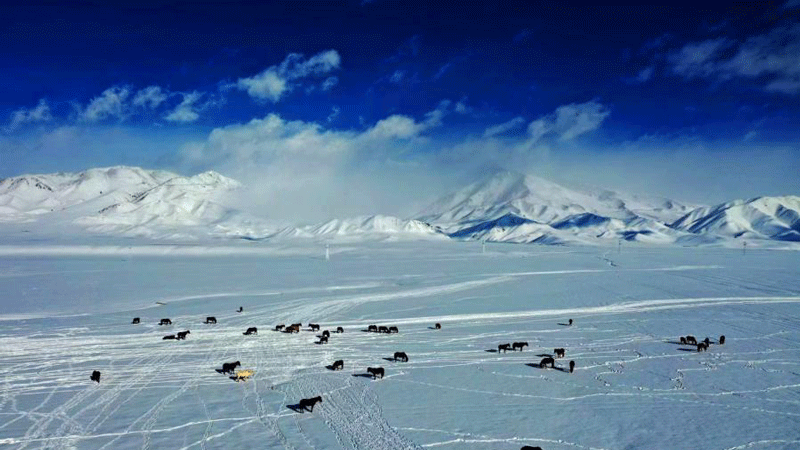A brief timeline of Chinese president's COVID-19 responses

Xi Jinping inspects the COVID-19 prevention and control work at Beijing Ditan Hospital in Beijing, capital of China, Feb. 10, 2020. (Xinhua/Ju Peng)
BEIJING, Dec. 9 (Xinhua) -- For the past nearly three years, President Xi Jinping has been leading China in its tough but extraordinary fight against the COVID-19 epidemic.
The country logged the lowest COVID-19 incidence and death toll among all major countries in the world in the period.
Reviewing the timeline of the country's epidemic response led by the president may reveal what was done right.
Jan. 20, 2020. When the epidemic began to hit China, Xi, who was inspecting Yunnan Province at the time, ordered resolute actions to curb the virus' spreading. From the very beginning, he stressed putting people's lives and health above all else.
Jan. 22, 2020. As the virus wreaked havoc in central China's Hubei Province and particularly in its capital city Wuhan, Xi assessed the situation and ordered the shutting of exit channels from the capital city and the province. Around 10 million people in the city were placed under an unprecedented lockdown. Yet the move was instrumental in stemming the spread.
Jan. 25, 2020. It was the Lunar New Year, one of the most cherished traditional holidays for the Chinese. Xi, who is also general secretary of the Communist Party of China (CPC) Central Committee, convened a Party leadership meeting to discuss and plan COVID-19 responses. A central leading group was formed, with work teams sent to localities that reported an alarming epidemic status.
Feb. 3, 2020. Upon approval by Xi, who is also chairman of the Central Military Commission, China's armed forces sent 1,400 medics to Wuhan on a mission to treat COVID-19 patients. Many among them had rich experience in fighting contagious diseases such as SARS in 2003 in Beijing and Ebola in Sierra Leone and Liberia.
Feb. 10, 2020. Xi inspected epidemic prevention and control in Beijing. He sent regards to medical personnel and workers on the front line all over the country and devised plans for the next stage of epidemic response.
Feb. 23, 2020. Xi specifically stressed the need to coordinate the COVID-19 response with economic and social development at a work meeting to advance both fronts.
March 2, 2020. Xi visited the Academy of Military Medical Sciences and the School of Medicine at Tsinghua University in Beijing to inspect work on COVID-19 scientific research. He urged arduous efforts to win the fight against the epidemic, as well as persistent efforts to seek solutions through science.
March 10, 2020. It was a crucial moment in China's anti-epidemic battle. Xi arrived at the hardest-hit city of Wuhan to inspect the epidemic response on the ground. Epidemic control, according to Xi, was on top of the agenda.

Combo photo shows Xi Jinping waving to residents who are quarantined at home and sending regards to them at a community in Wuhan, central China's Hubei Province, March 10, 2020. (Xinhua/Xie Huanchi)
March 26, 2020. The Extraordinary G20 Leaders' Summit on COVID-19, an unprecedented high-caliber virtual meeting, was held. It was also the first major multilateral event that Xi attended since the COVID-19 outbreak. His speech at the meeting played a crucial role in rallying international solidarity to fight the pandemic.
April 4, 2020. It was Tomb-sweeping Day, a traditional Chinese holiday to mourn ancestors and deceased family members. Xi led a national mourning for the lives lost to the novel coronavirus outbreaks.
April 8, 2020. The lockdown of Wuhan was lifted. On the same day, Xi chaired a Party leadership meeting to discuss implementing routine COVID-19 response measures and advancing the resumption of work and production across the board.
Late May 2020. The postponed annual sessions of the country's top legislature and top political advisory body were convened. Sitting down with fellow lawmakers, Xi raised the demand for a better public health system and made plans to strengthen routine COVID-19 prevention and control and accelerate economic and social development.
Sept. 8, 2020. Xi hailed China's great spirit in battling the COVID-19 epidemic as the country's model virus fighters were accorded grand state honors. China had secured major strategic achievements after eight months of fighting the COVID-19 epidemic.

Xi Jinping presents medals to the recipient of the Medal of the Republic Zhong Nanshan (2nd R, front), and recipients of the national honorary title, "the People's Hero," Zhang Boli (2nd L, front), Zhang Dingyu (1st R, front) and Chen Wei (1st L, front), at a meeting commending role models in the country's fight against the COVID-19 epidemic at the Great Hall of the People in Beijing, capital of China, Sept. 8, 2020. (Xinhua/Xie Huanchi)
Jan. 28, 2021. The CPC leadership held a group study session on getting off to a good start in the 14th Five-year Plan (2021-2025). Xi stressed preventing both imported cases and domestic resurgence without any let-up to ensure that there would be no large inflows or resurgence.
March 6, 2021. Xi stressed "strategic priority" to safeguarding people's health when he joined national political advisors from the education, medical and health sectors in a joint group meeting held during the "two sessions."
Aug. 5, 2021. Xi announced that China will strive to provide 2 billion COVID-19 vaccine doses to the world throughout the year and offer 100 million U.S. dollars to COVAX, which will help developing countries get life-saving vaccines.
Nov. 16, 2021. President Xi held the first virtual meeting with his U.S. counterpart Joe Biden. Xi pointed out that the pandemic once again proves that humanity lives in a community with a shared future. There is no higher priority than people's lives. Solidarity and cooperation is the most powerful weapon for the international community to defeat COVID-19.

Chinese President Xi Jinping meets with U.S. President Joe Biden via video link, in Beijing, capital of China, Nov. 16, 2021.(Xinhua/Yue Yuewei)
As the year 2022 began, the pandemic remained complex and fast-changing. Since March, a new wave of infections caused by the super-spreading Omicron variant hit many provinces.
March 17, 2022. At a Party leadership meeting, Xi stressed putting people and their lives first, adhering to the dynamic zero-COVID approach with science-based and targeted measures, and containing the spread of the virus as soon as possible.
May 5, 2022. Xi chaired a Party leadership meeting at which he emphasized efforts to consolidate the hard-won achievements in epidemic response and earnestly abide by duties.
June 28, 2022. Xi visited Wuhan again. "I have been concerned with people in Wuhan and now I am here to revisit you in this heroic city after two years," he said. Xi emphasized that over the past two years, Wuhan encountered multiple clusters of infections, but they were quickly brought under control without a large rebound.

Xi Jinping visits a residential community in Wuhan, capital of central China's Hubei Province, June 28, 2022. (Xinhua/Xie Huanchi)
Nov. 10, 2022. Xi chaired a Party leadership meeting to hear a report on the COVID-19 response, and discuss and arrange 20 measures to further optimize the responses. A day later, the Chinese government unveiled the measures and called for more science-based and targeted epidemic responses.
Photos
Related Stories
- President's trip fuels hopes for research
- China issues COVID-19 antigen self-test advice
- China releases guideline on home-based care for COVID-19 patients
- China's transport authority requires improvement in COVID prevention, control measures
- Chinese mainland reports 3,588 new local confirmed COVID-19 cases
Copyright © 2022 People's Daily Online. All Rights Reserved.









